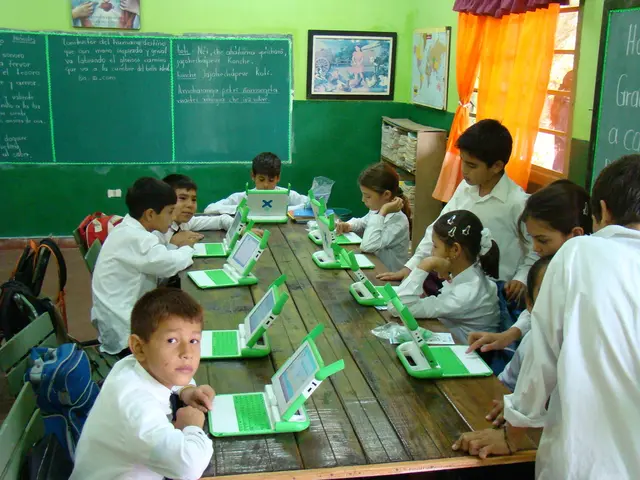Guide to Funding the Shift towards Climate Change Mitigation
In the face of growing global climate challenges, the role of Multilateral Development Banks (MDBs) and Development Financial Institutions (DFIs) has become increasingly crucial. These institutions are working tirelessly to help emerging market and developing economies (EMDEs) develop the necessary skills and knowledge for climate policies and projects.
One key strategy is public-private partnerships (PPPs), which can be instrumental in sharing risks and rewards between the public and private sectors for climate projects. Blended finance, a combination of concessional public finance with private capital, can lower investment risk and make climate projects more attractive to private investors.
The Global Stocktake (GST) report at COP28 UAE paints a stark picture, stating that the world is not on track to reduce emissions sufficiently to limit global temperature rise below 1.5°C. To meet this challenge, MDBs and DFIs should align their objectives with the Paris Agreement and work closely with the private sector to identify and finance projects with significant climate impact.
Governments can also play a pivotal role by creating a favorable investment climate for climate-friendly projects. This can be achieved through offering tax incentives, subsidies, and guarantees. Mobilizing private sector capital and leveraging it through collaboration with MDBs, DFIs, and other stakeholders is crucial to meeting the financial demands of climate action.
To achieve net-zero emissions by 2050, clean energy technologies need USD 4 trillion per year by 2030. To meet their Nationally Determined Contributions (NDCs), developing countries require USD 5.8-5.9 trillion in the pre-2030 period. Meeting these financial demands will require innovative financial instruments such as green bonds, sustainability-linked loans, and climate funds.
Innovation is also key in creating conducive policy environments. Strengthening local financial ecosystems can ensure that climate finance reaches the communities and projects that need it the most. Policies that mandate corporate sustainability reporting and carbon pricing mechanisms can drive private investment in low-carbon technologies.
Collaboration between MDBs, DFIs, and the private sector can be fostered through platforms that facilitate knowledge sharing and partnerships. Governments such as France, Germany, and the United States, along with corporations like Apple, Enel, and Unilever, have already taken steps in this direction by issuing Green Bonds and Sustainability-linked Loans to finance investments in renewable energy and sustainable infrastructure.
Local financial institutions play a critical role in financing climate transitions in EMDEs and can be supported by MDBs and DFIs through technical assistance, capacity building, and co-financing arrangements. MDBs and DFIs can also enhance their financial support through concessional loans, grants, and guarantees for climate projects.
Achieving climate goals requires systemic transformations across all levels of society and the engagement of various stakeholders, including cities, states, countries, financial institutions, and others. The Paris Agreement has been a catalyst for climate action, but the challenge demands greater ambition from all actors. The future of our planet depends on it.
Read also:
- chaos unveiled on Clowning Street: week 63's antics from 'Two-Tier Keir' and his chaotic Labour Circus
- Racing ahead in Renewable Energy Dominance: Changzhou, Jiangsu Pushes for Worldwide Renewable Energy Ascendancy
- Feeling disoriented or perplexed.
- The potential consequences of the European Union's Clean Hydrogen strategy in relation to exacerbating our global climate emergency.








